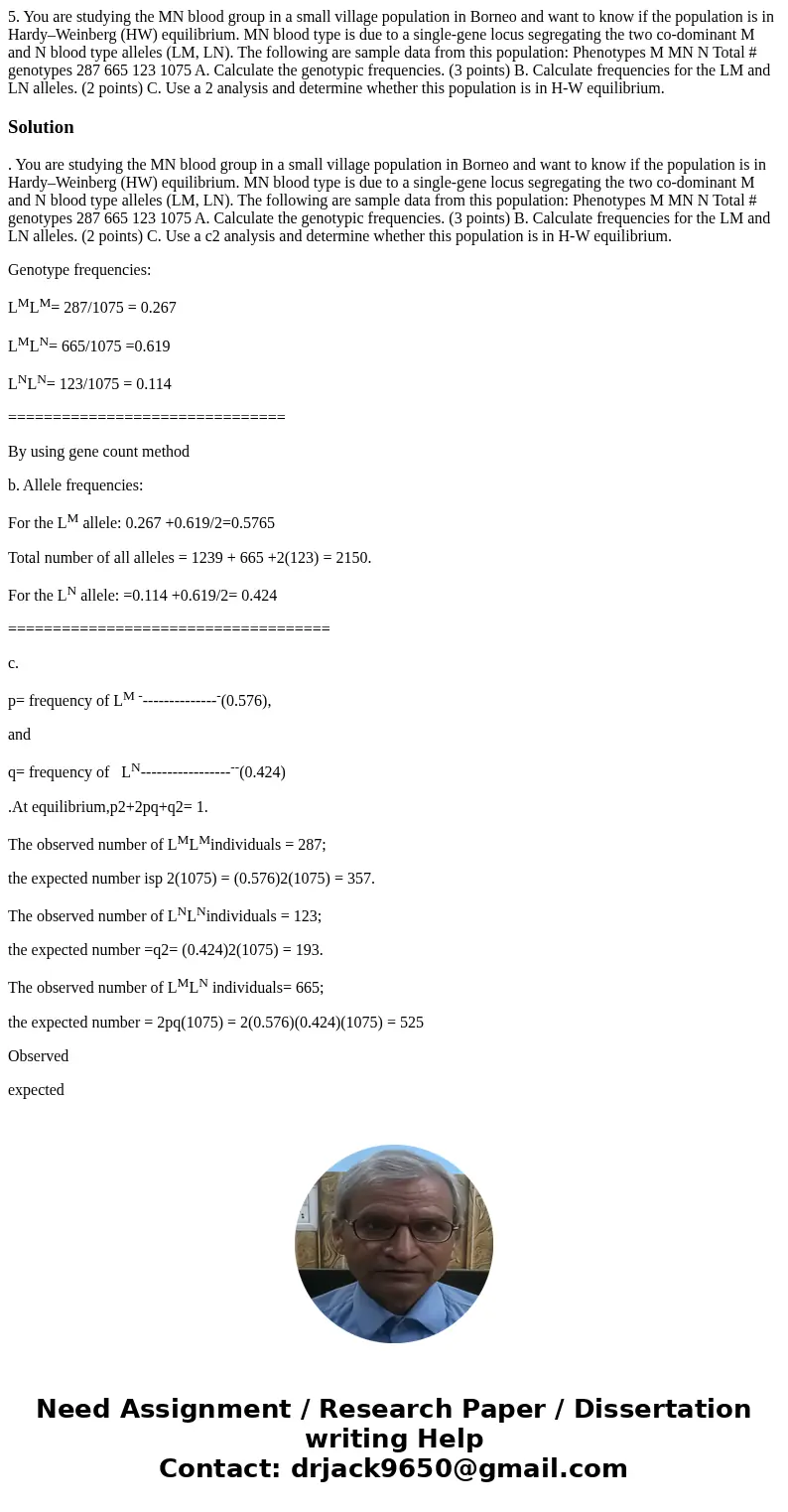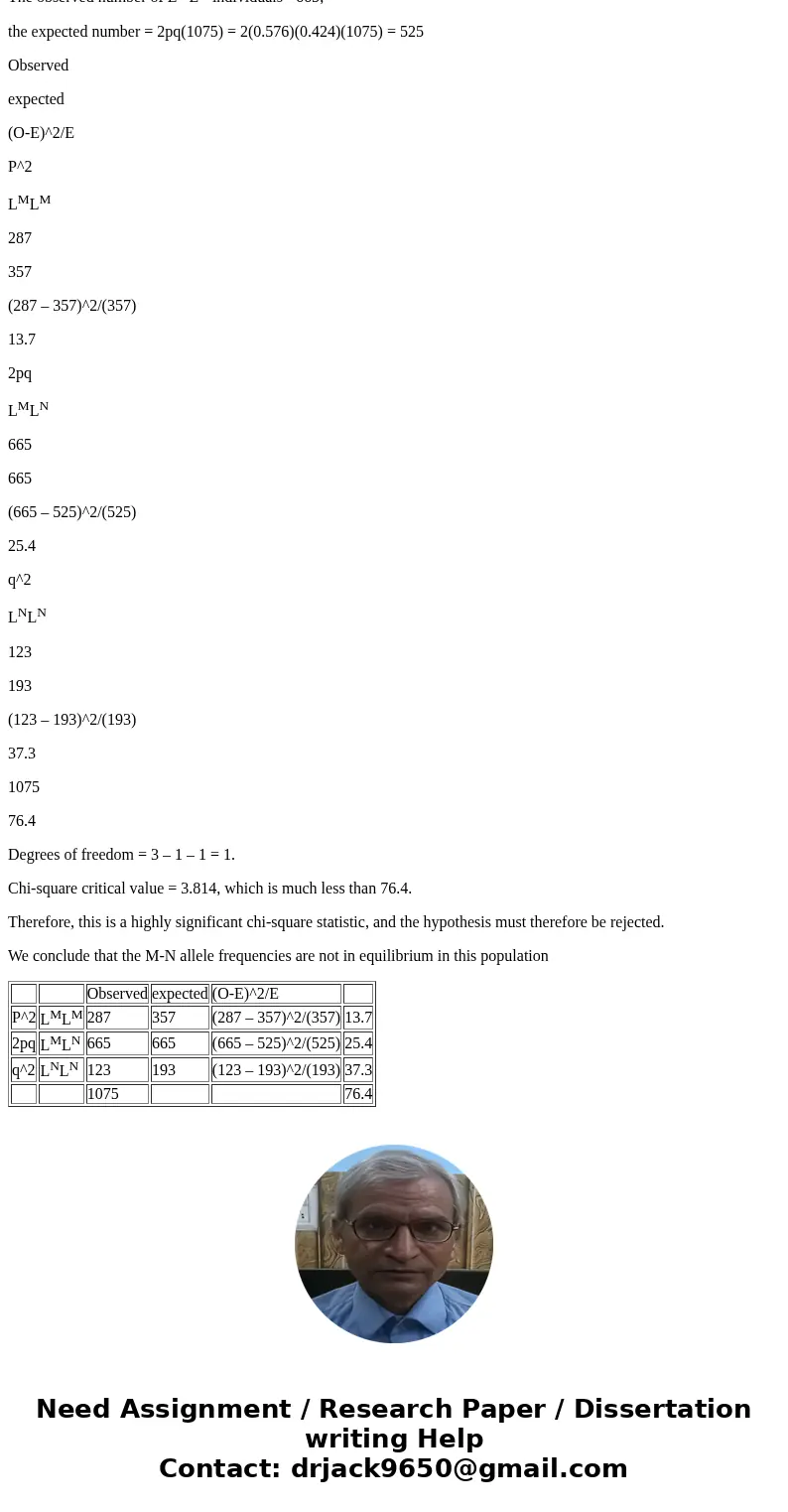5 You are studying the MN blood group in a small village pop
5. You are studying the MN blood group in a small village population in Borneo and want to know if the population is in Hardy–Weinberg (HW) equilibrium. MN blood type is due to a single-gene locus segregating the two co-dominant M and N blood type alleles (LM, LN). The following are sample data from this population: Phenotypes M MN N Total # genotypes 287 665 123 1075 A. Calculate the genotypic frequencies. (3 points) B. Calculate frequencies for the LM and LN alleles. (2 points) C. Use a 2 analysis and determine whether this population is in H-W equilibrium.
Solution
. You are studying the MN blood group in a small village population in Borneo and want to know if the population is in Hardy–Weinberg (HW) equilibrium. MN blood type is due to a single-gene locus segregating the two co-dominant M and N blood type alleles (LM, LN). The following are sample data from this population: Phenotypes M MN N Total # genotypes 287 665 123 1075 A. Calculate the genotypic frequencies. (3 points) B. Calculate frequencies for the LM and LN alleles. (2 points) C. Use a c2 analysis and determine whether this population is in H-W equilibrium.
Genotype frequencies:
LMLM= 287/1075 = 0.267
LMLN= 665/1075 =0.619
LNLN= 123/1075 = 0.114
===============================
By using gene count method
b. Allele frequencies:
For the LM allele: 0.267 +0.619/2=0.5765
Total number of all alleles = 1239 + 665 +2(123) = 2150.
For the LN allele: =0.114 +0.619/2= 0.424
====================================
c.
p= frequency of LM ----------------(0.576),
and
q= frequency of LN-------------------(0.424)
.At equilibrium,p2+2pq+q2= 1.
The observed number of LMLMindividuals = 287;
the expected number isp 2(1075) = (0.576)2(1075) = 357.
The observed number of LNLNindividuals = 123;
the expected number =q2= (0.424)2(1075) = 193.
The observed number of LMLN individuals= 665;
the expected number = 2pq(1075) = 2(0.576)(0.424)(1075) = 525
Observed
expected
(O-E)^2/E
P^2
LMLM
287
357
(287 – 357)^2/(357)
13.7
2pq
LMLN
665
665
(665 – 525)^2/(525)
25.4
q^2
LNLN
123
193
(123 – 193)^2/(193)
37.3
1075
76.4
Degrees of freedom = 3 – 1 – 1 = 1.
Chi-square critical value = 3.814, which is much less than 76.4.
Therefore, this is a highly significant chi-square statistic, and the hypothesis must therefore be rejected.
We conclude that the M-N allele frequencies are not in equilibrium in this population
| Observed | expected | (O-E)^2/E | |||
| P^2 | LMLM | 287 | 357 | (287 – 357)^2/(357) | 13.7 |
| 2pq | LMLN | 665 | 665 | (665 – 525)^2/(525) | 25.4 |
| q^2 | LNLN | 123 | 193 | (123 – 193)^2/(193) | 37.3 |
| 1075 | 76.4 |


 Homework Sourse
Homework Sourse